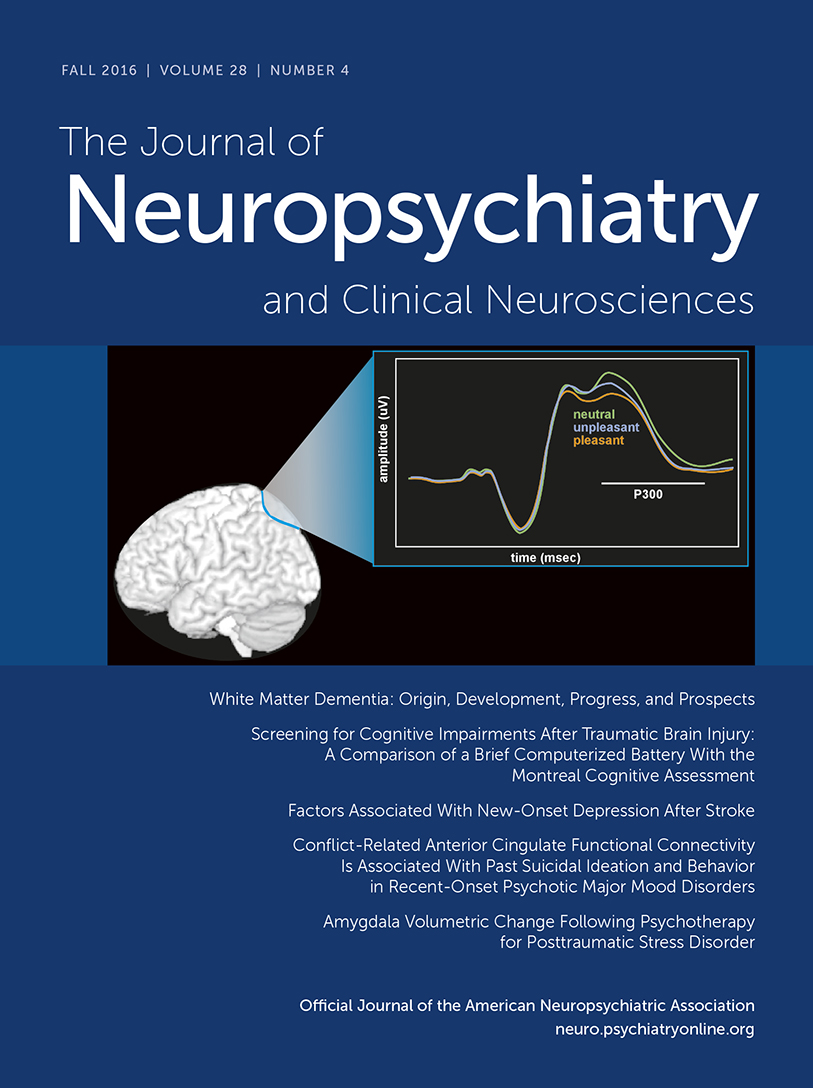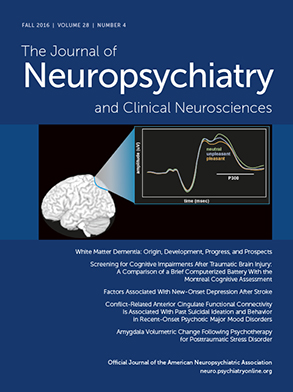Cognitive impairments are commonly experienced by persons with traumatic brain injury (TBI) and may contribute to difficulties performing instrumental and basic activities of daily living.
1,2 In busy clinical settings, neuropsychological assessment can prove challenging due to the length of many cognitive batteries, the need for skilled psychometricians to administer tests, and, in certain health care settings, the cost. While brief screening tools come with fewer hurdles, they can at best give limited insights into a person’s cognition. One such commonly used instrument is the Montreal Cognitive Assessment (MoCA), previously utilized in a TBI setting.
3,4Given the importance of obtaining cognitive data in people with TBI, but cognizant of the limitations of an instrument such as the MoCA and the barriers to more comprehensive assessments, we have developed a brief computerized cognitive battery that takes less than 10 minutes to administer, requires little expertise, and gives immediate, automated results. The present study addresses the clinical usefulness of this approach in comparison to MoCA.
Results
Demographics Data
Injury-related and demographics description of the sample are shown in
Table 1.
Cognitive and Psychosocial Data
The results of the cognitive assessment revealed that four subjects (1.6%) failed the MoCA based on Z score transformations. Of note is that this figure rises to 74 subjects (29%) had we just used the 26/30 MoCA impairment threshold without age and education correction. In those with a normal MoCA (N=251), 29.5% failed the Stroop, 37.5% the SDMT, and 24.3% the PVSAT-2. Overall, 54.98% of MoCA-intact subjects failed at least one test in the battery.
There were no significant differences in cognitive impairment frequencies between different TBI severity groups, as determined by categorical analyses using Pearson’s chi-square (χ2=1.98, df=2, p=.371 for Stroop; χ2=3.95, df=2, p=.139 for SDMT; and χ2=0.94, df=2, p=.625 for PVSAT-2). Given that only four subjects failed the MoCA, a similar chi-square analysis was not undertaken.
Associations Between Cognitive and Psychosocial Variables
In MoCA-intact subjects, significant differences in indices of psychological distress (GHQ) and psychosocial outcome (RHIFUQ) were found between subjects who passed and failed the Stroop and SDMT, with a trend evident in the PVSAT-2 (
Table 2). A closer look at the GHQ subscale scores revealed that MoCA-intact subjects who failed the SDMT had greater somatic distress (t=3.051, df=235, p=0.003) and anxiety (t=2.186, df=235, p=0.030). Similarly, those who failed the Stroop had greater social difficulties (t=2.276, df=239, p=0.024) and depression (t=2.382, df=113.749, p=0.019). Concerning the RHIFUQ, those who failed the SDMT had more difficulties participating in simple and complex conversation (t=2.101, df=237, p=0.037, and t=–3.386, df=236, p=0.001, respectively) and enjoying leisure activities (t=1.986, df=236, p=0.048). Those who failed the PVSAT-2 had more difficulties in performing routine activities (t=–2.129, df=219, p=0.034). Finally, failure on the Stroop was associated with greater dysfunction in managing simple and complex conversation (t=2.862, df=117.721, p=0.005, and t=–2.924, df=240, p=0.004, respectively) and sustaining relationships with partners (t=−2.418, df=108.754, p=0.017).
To address a possible association between depression and anxiety on the one hand and cognition and psychosocial outcome on the other, correlations were sought between GHQ depression/anxiety subscale scores and performance on the computerized battery and RHIFUQ. This revealed weak, albeit statistically significant, correlations between the GHQ depression subscale scores and performance on the Stroop (r=0.197, p=0.02) and SDMT (r=0.142, p=0.027). Weak correlations were also found between the GHQ anxiety subscale scores and performance on the Stroop (r=0.130, p=0.042) and SDMT (r=0.158, p=0.014). Last, there were stronger correlations between the GHQ depression subscale scores and the RHIFUQ (r=0.552, p<0.001), and between the GHQ anxiety subscale scores and the RHIFUQ (r=0.431, p<0.001).
An association was then sought between the presence of a premorbid psychiatric history and cognitive measures. This revealed that a premorbid psychiatric history including depression and anxiety was not significantly correlated with psychometric scores on cognitive tests (r=0.058, p=0.367 for Stroop, r=0.020, p=0.755 for SDMT, r=0.069, p=0.305 for PVSAT-2, and r=0.018, p=0.785 for MoCA). Past psychiatric history was also not significantly correlated with total score on the GHQ (rs=0.109, p=0.093), although it was weakly correlated with total score on the RHIFUQ (rs=0.143, p=0.026).
There was an association between total scores on the GHQ and RHIFUQ for the entire sample (r=0.686, p<0.001).
Discussion
Our data reveal that the MoCA lacks sensitivity in detecting cognitive impairment in TBI subjects. In contrast, our brief computerized cognitive assessment is able to detect impairment in more than 50% of the subjects deemed cognitively intact on the MoCA. Furthermore, the deficits elicited are independent of premorbid psychiatric history and come with real-world implications, namely greater psychosocial dysfunction. Before discussing these results in more detail, a brief comment on our sample composition is required. The percentage breakdown in our sample into mild, moderate, and severe TBI approximates the distribution of TBI severity in general.
10 Moreover, the fact that we enrolled a consecutive sample of attendees from our clinic suggests that our sample composition is broadly representative of TBI subjects in general.
The MoCA has been used previously in a TBI setting and reportedly detected cognitive impairment in 88.3% of the sample.
3 This far exceeds the percentage impairment in our study, a difference attributable to the utilization of a single-point cutoff score of 26 and to time of testing, namely three weeks postinjury (as opposed to our three months). Notably, our sample yielded a failure rate of 29.0% on the MoCA using the 26/30 cutoff score, which essentially disappeared after Z score transformation. Thus, our study exposes an important limitation of interpreting the MoCA with a single-point cutoff score, namely the possibility of overestimating the level of cognitive impairment. As such, cognitive impairment rates reported in previous uncorrected MoCA studies using the 26/30 cutoff should be viewed with caution.
Cognitive dysfunction in TBI is associated with many varied indices of poor real-world outcome. It has been linked to greater difficulties in finding and/or sustaining employment,
12 maintaining relationships,
13 pursuing leisure activities,
13 and achieving a good quality of life.
14 Our computerized data support this, given their association with scores on the RHIFUQ, a composite measure of psychosocial outcome. Furthermore, these real-world indices are linked to emotional well-being,
15 which our data underscore; for we have shown that subjects who failed the Stroop and SDMT had a level of distress that exceeds the threshold score for psychiatric “caseness” according to the 28-item GHQ. Thus, the preliminary findings emerging from our computerized battery tell a coherent story in people with a TBI, namely that cognitive failings are associated with more challenges at work and in relationships and a higher degree of emotional distress.
Having demonstrated that the brief computerized battery is more sensitive than the MoCA in detecting cognitive compromise in this sample, it is important to interpret this result within the context of certain methodological limitations. First, the MoCA and our computerized battery differ somewhat in the scope of what they measure. The MoCA is a single composite score derived from many different cognitive domains, whereas each computerized test is more selective in its focus. That said, the three tests do capture an array of cognitive failings known to occur frequently in people with a TBI, namely impaired information processing speed (SDMT, PVSAT), working memory (PVSAT), and executive function (Stroop).
1 Thus, taken collectively, these tests measure multiple aspects of cognition, as does the MoCA, albeit with a different emphasis resulting in a markedly improved sensitivity.
Second, it should be emphasized that associations do not imply causality. While it is parsimonious to attribute the cognitive failings on the computerized battery to the effects of cerebral trauma, other factors may also be playing a role. While our data ruled out premorbid psychiatric factors, such as depression and anxiety, emotional distress at the time of testing may contribute to impaired performance on the cognitive tests, as our data demonstrated. Similarly, these factors may contribute to greater self-reported functional difficulties, as measured by the RHIFUQ. Additional factors, such as pain, headache, and dizziness, to mention but a few, may also be important, but our methodology was not geared toward teasing out these potential influences.
Third, our computerized battery did not differentiate between mild, moderate, and severe TBI subjects. Here the possibility of type II error should be considered, given the small sample sizes of the moderate and severe groups relative to the mild TBI group.
Within the context of these limitations raised above, our computerized battery offers some important advantages. It is brief (10 minutes or less), generates automated, immediate results for the Stroop and SDMT, requires no special training, and is not dependent on motor involvement, a plus when assessing TBI subjects with upper limb injuries. Moreover, serial versions are available for longitudinal testing. Finally, and most important, the battery fits easily into a busy outpatient TBI clinic. While our computerized screening approach should not be misconstrued as a replacement for detailed cognitive inquiry, it is more sensitive than the MoCA in detecting cognitive compromise and provides clinically useful, rapid results in the absence of a neuropsychological service.

